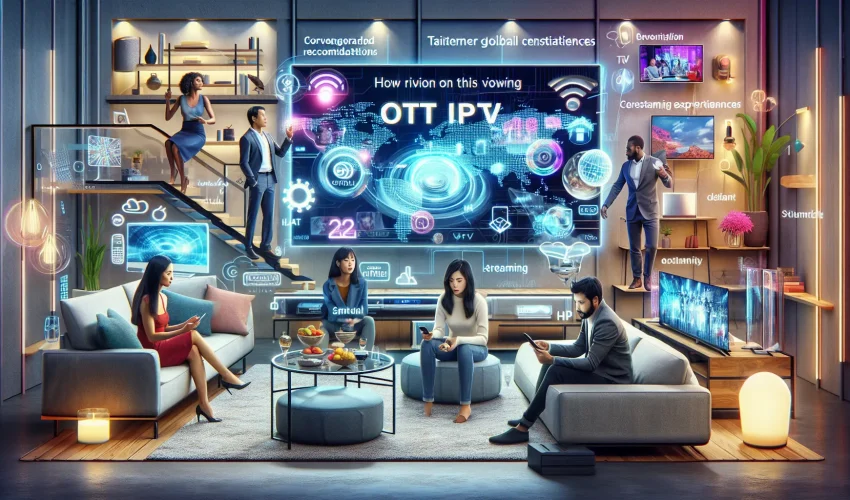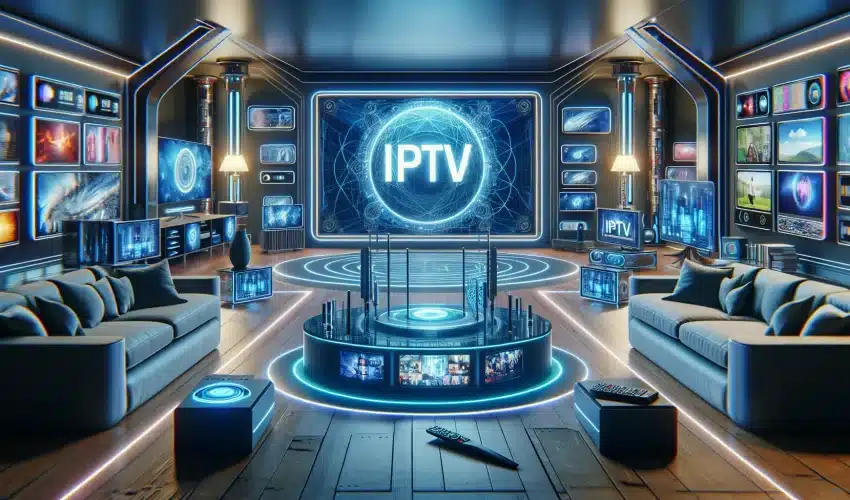
What is the Difference Between IPTV and OTT in 2025?
Estimated reading time: 10 minutes
Key Takeaways
- IPTV uses managed networks: Offers consistent quality, requires specific hardware.
- OTT services over the public internet: Flexible viewing, variable streaming quality.
- Content offerings differ: IPTV provides traditional channels; OTT offers on-demand libraries.
- Different cost structures: IPTV often bundled with higher fees; OTT offers flexible subscriptions.
- Choosing depends on individual needs: Many combine both IPTV and OTT for optimal experience.
Table of Contents
- The Evolution of Digital Content Delivery
- Core Differences: IPTV vs OTT Explained
- Technical Infrastructure and Content Delivery
- Quality and Reliability Comparison
- Device Compatibility and Access
- Content Libraries and Programming
- Cost Structure and Subscription Models
- Making the Right Choice in 2025
- Looking Forward
- Frequently Asked Questions
The Evolution of Digital Content Delivery
Digital streaming has transformed how we watch television and video content. For consumers weighing their entertainment options in 2025, understanding the distinction between IPTV and OTT helps make informed decisions about which service best fits their needs.
Core Differences: IPTV vs OTT Explained
IPTV (Internet Protocol Television) streams content through a private, managed network controlled by internet service providers. Think of it as a digital version of traditional cable TV, delivering programming through a dedicated pipeline that ensures consistent quality. For a comprehensive understanding of IPTV services, refer to our IPTV Providers Ranked: The Ultimate Cord-Cutting Guide for 2025.
OTT (Over-The-Top) services stream content directly through the public internet. Popular platforms like Netflix, Disney+, and Amazon Prime Video bypass traditional broadcasting infrastructure, letting you watch anywhere with an internet connection.
Technical Infrastructure and Content Delivery
IPTV’s Managed Network Approach
- Uses dedicated bandwidth for stable streaming
- Requires specific hardware (set-top box); for setup guidance, read our IPTV Streaming Setup: A Comprehensive Guide
- Maintained by your internet service provider
OTT’s Internet-Based Delivery
- Streams through standard internet connections
- Works on any internet-capable device
- Quality varies with internet speed
For more on the differences between IPTV and OTT, visit this resource.
Quality and Reliability Comparison
IPTV typically delivers more consistent video quality because it uses dedicated infrastructure. The controlled network environment means less buffering and fewer interruptions during peak viewing times. To maximize your IPTV streaming experience, consider our Maximizing Your IPTV Streaming Experience: A Comprehensive Guide.
OTT services adapt to your available internet bandwidth. While this flexibility allows viewing anywhere, streaming quality can fluctuate during high-traffic periods or with slower connections.
Learn more about IPTV vs. OTT quality comparison at this article.
Device Compatibility and Access
IPTV Hardware Requirements
- Set-top box installation
- TV connection setup
- Provider-specific equipment; see our IPTV Service Tutorial 2025: A Comprehensive Guide
OTT Device Freedom
- Smart TVs
- Phones and tablets
- Gaming consoles
- Computers and laptops
Explore more about device compatibility in this article.
Content Libraries and Programming
IPTV services often focus on traditional TV channels, local programming, and scheduled content. They might include on-demand options but generally follow a more conventional broadcasting model. For insights into IPTV content offerings, check out our IPTV Viewer Reviews: A Comprehensive Analysis.
OTT platforms excel in providing vast libraries of on-demand content, including:
- Original series and movies
- International programming
- Niche content categories
- User-curated watchlists
Cost Structure and Subscription Models
IPTV typically comes bundled with internet service packages. While this can simplify billing, it often means:
- Higher monthly fees
- Equipment rental costs
- Installation charges
- Contract commitments; see our guide on Best IPTV Subscription Services in June 2025: Cut Your Cable Bill Today
OTT services follow a more flexible pricing model:
- Monthly or annual subscriptions
- No equipment fees
- Cancel anytime options
- Multiple tier choices
Making the Right Choice in 2025
Consider these factors when choosing between IPTV and OTT:
Choose IPTV if you:
- Value consistent streaming quality
- Prefer traditional TV programming
- Want bundled services
- Have reliable ISP options; learn how to Optimize Your IPTV Setup: A Comprehensive Guide
Choose OTT if you:
- Want flexible viewing options
- Prefer on-demand content
- Need multi-device access
- Like subscription flexibility
Looking Forward
The streaming landscape continues to evolve. While IPTV maintains its appeal for users seeking reliability and traditional programming, OTT services lead the market with innovative features and content variety. Your choice depends on your viewing habits, technical requirements, and budget preferences.
For a deeper understanding of IPTV and OTT trends, visit this comprehensive guide.
Remember, these services aren’t mutually exclusive. Many consumers combine both options to create their ideal entertainment setup, maximizing the benefits each platform offers.
Frequently Asked Questions
What is the main difference between IPTV and OTT?
IPTV uses managed networks provided by ISPs for content delivery, offering consistent quality and requiring specific hardware. OTT delivers content over the public internet, offering more flexibility and device compatibility.
Do I need special equipment for IPTV?
Yes, IPTV typically requires a set-top box provided by your service provider to decode the streaming signals.
Can I use both IPTV and OTT services together?
Absolutely, many consumers use both services to enjoy a wider range of content and features.
Which is more cost-effective, IPTV or OTT?
OTT services generally offer more flexible and often lower-cost subscription models, while IPTV might come with higher fees due to bundled services and equipment costs.
Is the streaming quality better on IPTV?
IPTV often provides more consistent streaming quality due to its use of managed networks, whereas OTT streaming quality can vary based on internet speed and network congestion.



